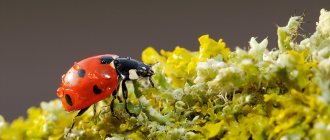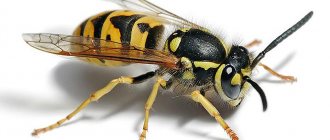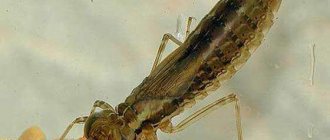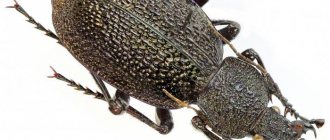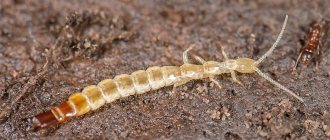The maximum human lifespan is 100-115 years. Do you know how many years animals, insects, mammals and other living creatures live? Man has been trying to answer this question for many years. But until recently, most information about lifespans came from centuries-old records of animals living in captivity. Although these records showed how long animals could live, this information did not provide a reliable picture of wild animals.
Below is a table showing the maximum life expectancy of various inhabitants of our planet.
Animal lifespan data varies greatly from different sources, so we collected and averaged them.
It is very important to understand that life expectancy in natural habitats (in the wild) can be very different from life expectancy in captivity. In the table below, the upper lifespan thresholds generally apply to life in captivity, but some animals can live to that age in the wild.
Animals that live close to humans are protected from floods, drought, fire and predators. If they become sick and injured, they receive immediate medical attention. This care helps them live long, healthy lives. However, wild animals do not have these advantages. They live only as long as they can protect themselves and find food. For example, outdoor cats only live 4-5 years, while indoor cats can live 15-18 years.
In general, as long as a bee, ant, fly and other insects live, they don’t live long.
There is a huge variety of aging phenotypes among them. The general process of mechanical resource loss in insects involves the inability to swallow full food and refers to defects in the oral or digestive systems. For example, the fly is composed of post-mitotic tissues and fragile organs, making it susceptible to wear and tear. These essential organs and/or tissues depend on how long flies live.
Phenotypes of insect aging
Ants, like many other insects such as honey bees, have two distinct aging phenotypes: workers and queens.
At the same time, as long as a bee lives, during working summer time it is about a month; those born in the fall can live up to six months during non-working winter time.
The difference between workers and the queen is specialized feeding. Workers are female arthropods with underdeveloped reproductive organs. For example, larvae that are destined to become queens feed ten times more often. In addition, the uterus suffers less from mechanical production.
Lower class of insects
The lower class of insects like cockroaches, arachnids, wingless and winged arthropods have a life expectancy of several months to two years.
This is due to their transformation phenotype. Such a short life span of a butterfly is associated with other life forms such as a caterpillar, larva, and pupa.
In addition to mechanical aging, other processes can lead to rapid aging and/or sudden death after reproduction in many Lepidoptera. Hormone-driven processes occur in many lower species. Some arthropod species do not eat after fertilization. Some spiders have a short lifespan and increased feeding leads to increased reproduction and earlier death. At the other end of the life spectrum, female tarantulas can live over 25 years without showing obvious signs of aging.
Other indeterminate arthropods include lobsters, whose moults result in the replacement of hard tissue, avoiding wear and tear and continuous growth. Echinoderms and sea stars live for more than 40 years. Shellfish and some species of octopus also show no signs of aging and live long lives. Another interesting function of many classes is to adapt to the environment of the animal chameleon.
Which ones live the least
May flies, or stoneflies, have the shortest lifespan on Earth. Stoneflies live only for a day. May flies are also called “day flies” due to their short lifespan. There are 2,500 different species of mayflies in the world. In fact, some family members die of natural causes within hours.
The sole purpose of mayflies is to reproduce. During this short period of life, they form groups to reproduce.
How long do insects live? This depends on several factors. When conditions get really bad, some insects go into diapause.
It's a bit of a life on hold until things get better. Fleas take time out if there are no animals nearby to feed on. Typically, insect diapause lasts weeks, months, years.
How long do mosquitoes live after they bite?
The life of a mosquito depends on the temperature of the room, the presence of food components and its gender. If the temperature in your room exceeds +25°C, the mosquito may die within a month. The average lifespan of insects is 40-45 days, at a temperature of +10°C they can live up to 120 days.
Features of a mosquito
Blood-sucking creatures live near water bodies and damp places. The female lays up to 300 eggs there; after 2-8 days, the formation of a larva occurs. After 20 days a pupa appears, and after 5 days an adult insect appears, ready to reproduce in a week.
For allergy sufferers and people with asthma, insect bites pose an unpleasant health threat. The reaction appears as:
- cough;
- nausea;
- headache.
Sometimes anaphylactic shock may develop, which requires immediate medical attention.
How long does an insect live after being bitten?
The female mosquito needs to drink blood to produce healthy offspring. She can lay eggs without blood, however, giving strength to the new generation, she will quickly die. The offspring will also be weak, and only a small part of the bloodsuckers will survive. The female gives birth to offspring every 3 days and drinks blood up to 8 times a day.
Cicada
The female cicada lays her eggs on tree branches. When the nymph hatches from the egg, it falls and buries itself in the ground.
Attaches to the roots of plants and trees. Here it remains motionless for about 17 years, sucking the sap of the roots. After this long “burial”, a mysterious instinct forces the larva to move towards the light. She climbs tree trunks, skin falling apart. A mature cicada emerges.
For about five weeks, the Cicada leads an active life in the sun. After this period he dies. Most species of beetles live only a few days or even hours.
How long does a mosquito live after biting a person?
In the summer, city dwellers and, especially, summer residents begin to be bothered by annoying mosquitoes. During the rainy season there is simply no escape from them. People are interested in how long a mosquito lives after biting a person, and whether the reproduction of insects can be somehow prevented.
Due to the fact that there is a species of malaria mosquitoes, the bite of which can result in death, many studies have been carried out to study their populations. Here's what scientists were able to establish:
- The lifespan of male mosquitoes is twice that of females.
- The possibility of long-term existence is influenced by climatic conditions - humidity level, temperature.
Mosquitoes are active year-round in warm weather countries. In winter they sleep and can be found in the cracks of houses, barns and other wooden buildings.
During the experiments, the life expectancy of mosquitoes was recorded:
- at temperatures from + 20 to + 25 C it was 57 days;
- when the thermometer drops to + 10 - + 14 C, an individual individual can exist for up to 119 days;
- in heat from + 25 C, adult males hardly survive up to 20 days.
Diet also affects lifespan. With constant blood supply, the female can bear offspring for a maximum of 43 days. She lays eggs every 3 days, up to 150 eggs at a time.
If food is not provided, the female will be able to lay only 10 eggs. After this, her strength will be depleted, and she will soon die. If blood nutrition is provided, the individual will be able to bear healthy offspring and prolong its life.
Amazing facts about mosquitoes
It is noteworthy that there are approximately 3,000 species of mosquitoes on the planet. Their population is distributed in almost all countries, with the exception of Antarctica, which is a permafrost territory. About a hundred of them are typical for different regions of Russia.
How long a mosquito lives after biting a person can only be said on average. In laboratory conditions, insects can live a long time due to the provision of optimal temperature conditions and nutrition.
In the natural environment, their existence is associated with the risks of being eaten, for example, by a frog, or being killed by a person immediately after being bitten. In this regard, there is no exact answer to the question of how long a female mosquito lives after biting a person.
Source: https://vseonauke.com/1015882525620046230/skolko-zhivet-komar-posle-ukusa-cheloveka/
Bees
The queen bee lives for two to three years. Some species are up to five years old. On average, worker bees live five to six weeks in the summer. During the winter months, a worker can live for up to six months to help maintain the hive, raising new workers for the spring.
A worker bee stings only once. Dies after biting its victim. These bites are to protect the hive or to defend against a threat.
Fleas
Fleas go through their entire life cycle (eggs, larvae, pupae, adults) in just two weeks or more than a year. Flea larvae remain in their case until they sense vibrations from a nearby food source.
This is why fleas can suddenly appear everywhere. They were waiting for the right moment to enter adulthood. Adult fleas live for about two weeks without a host. Pupae – several months.
Most flies live 15 – 25 days. In fact, flies reach full adult maturity in just 12 days. Once mature, the female lays 150 eggs at a time.
flies
The process of growing a fly takes 10 days (less in hot climates). An adult housefly lives on average 15-25 days, a fruit fly - about 10 days, a blowfly - one week. But there are many circumstances in which these indicators can differ significantly from the average. This species survives at temperatures from + 10 to + 40°C. The optimum is considered to be +20…+25°С. At higher or lower rates, the cycle duration is reduced. However, if with the onset of cold weather the fly manages to successfully hide, then it will hibernate, overwinter and wake up safely next spring, which extends its existence to 6 months. Flies living in an apartment can reach one year of age without any problems.
Mosquitoes
Adult female mosquitoes live more than one month. Males die one to two weeks after they become adults. Female mosquitoes—the ones that bite—rely on blood meals to get nutrients. After bloodletting, eggs are laid.
Sometimes one egg (Aedes mosquitoes), sometimes up to 300 at a time (Culex spp.) - in or near water bodies. The eggs hatch and become larvae or wigglers.
Wigglers enter the puppet stage as quickly as their species and the surrounding weather require. Usually this is several days. The pupa becomes an adult in just two to seven days. Then it hunts for nectar or blood to start the cycle again.
What does life expectancy depend on?
In laboratory conditions, female mosquitoes live up to 120 days, males - 2 times less. Such a difference in life expectancy between insects of the same species has no explanation.
In laboratories, mosquitoes live longer than in the wild, since they have adequate nutrition and optimal temperature conditions. There is no exact data on how long they live in natural conditions.
Scientists have found that the life of a mosquito is influenced by the following factors:
- Air temperature. Insects do not tolerate hot weather well. The cooler it is in the house or outside, the longer their life. At air temperatures above +25 ºC, mosquitoes live up to 42 days, at +10 ºC up to 120.
- Frequent meals. To live long, male mosquitoes must regularly receive food in the form of nectar, and females must obtain blood. In forests and other uninhabited areas, mosquitoes live less because they do not find suitable food for themselves.
- Weather. Mosquitoes live longer and reproduce better in calm, windless weather. Frequent downpours, strong winds, heat, and sudden temperature changes shorten the life of insects and destroy their offspring.
If mosquitoes appear in late summer or early autumn, they hibernate before the onset of winter. In the spring they wake up, live and reproduce for another 1-2 months.
Ticks
Ticks live three to five months between each stage (egg, larva, nymph, adult). Ticks, which require multiple molts before reaching maturity, can take up to three years to mature.
Once a tick has reached maturity, its sole purpose is to reproduce. The male will die shortly after mating. Some females lay one large batch of eggs before dying.
Others are several smaller batches before the end of their lives comes.
Egg laying lasts from several days to several weeks. Some species complete their life cycle in just 90 days, others in a year. Some take two years to complete their life cycle.




